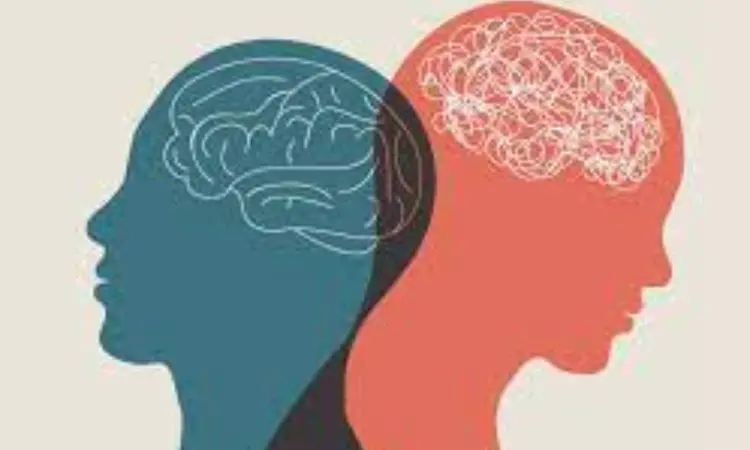- Home
- Medical news & Guidelines
- Anesthesiology
- Cardiology and CTVS
- Critical Care
- Dentistry
- Dermatology
- Diabetes and Endocrinology
- ENT
- Gastroenterology
- Medicine
- Nephrology
- Neurology
- Obstretics-Gynaecology
- Oncology
- Ophthalmology
- Orthopaedics
- Pediatrics-Neonatology
- Psychiatry
- Pulmonology
- Radiology
- Surgery
- Urology
- Laboratory Medicine
- Diet
- Nursing
- Paramedical
- Physiotherapy
- Health news
- Fact Check
- Bone Health Fact Check
- Brain Health Fact Check
- Cancer Related Fact Check
- Child Care Fact Check
- Dental and oral health fact check
- Diabetes and metabolic health fact check
- Diet and Nutrition Fact Check
- Eye and ENT Care Fact Check
- Fitness fact check
- Gut health fact check
- Heart health fact check
- Kidney health fact check
- Medical education fact check
- Men's health fact check
- Respiratory fact check
- Skin and hair care fact check
- Vaccine and Immunization fact check
- Women's health fact check
- AYUSH
- State News
- Andaman and Nicobar Islands
- Andhra Pradesh
- Arunachal Pradesh
- Assam
- Bihar
- Chandigarh
- Chattisgarh
- Dadra and Nagar Haveli
- Daman and Diu
- Delhi
- Goa
- Gujarat
- Haryana
- Himachal Pradesh
- Jammu & Kashmir
- Jharkhand
- Karnataka
- Kerala
- Ladakh
- Lakshadweep
- Madhya Pradesh
- Maharashtra
- Manipur
- Meghalaya
- Mizoram
- Nagaland
- Odisha
- Puducherry
- Punjab
- Rajasthan
- Sikkim
- Tamil Nadu
- Telangana
- Tripura
- Uttar Pradesh
- Uttrakhand
- West Bengal
- Medical Education
- Industry
Lumateperone promising for treatment of bipolar depression

In the study, published in The Journal of Clinical Psychiatry, lumateperone 42 mg was shown to significantly improve depression symptoms and disease severity in patients experiencing bipolar depression, with or without mixed features, and did not induce mania.
Bipolar disorder is a chronic mental illness with disabling symptoms characterized by episodes of depression, hypomania, and mania. Compared to hypomania or mania, depressive episodes in bipolar disorder patients are more frequent and contribute to the increased risk of mortality and morbidity in these patients. Symptoms of mania/hypomania and depression can also occur simultaneously in a state referred to as mixed features, resulting in a heterogenous clinical presentation that can raise the risk of misdiagnosis and lead to therapeutic challenges.
Lumateperone (lumateperone tosylate, ITI-007), a mechanistically novel antipsychotic which is approved by the FDA for treating adults with schizophrenia and depressive episodes associated with bipolar I or bipolar II disorder as monotherapy and as adjunctive therapy with valproate or lithium. Currently, there are no FDA-approved treatments for bipolar depression with mixed features, in which patients experience poorer clinical outcomes versus patients without mixed features.
Against the above background, Roger S. McIntyre, Department of Psychiatry, University of Toronto, Toronto, Ontario, Canada, and colleagues investigated efficacy of lumateperone 42 mg in patients with bipolar I or bipolar II disorder and experiencing a major depressive episode stratified by the presence of mixed features.
The study included adults aged 18 to 75 years with bipolar I or bipolar II disorder experiencing an MDE. They were randomized in the ratio of 1:1 to receive 6-week oral lumateperone 42 mg/d or placebo from November 2017–March 2019.
The researchers analyzed Clinical Global Impression Scale-Bipolar Version-Severity (CGI-BP-S) total score, Montgomery-Asberg Depression Rating Scale (MADRS) total score, and Quality of Life Enjoyment and Satisfaction Questionnaire-Short Form (Q-LES-Q-SF) in 376 patients. They were categorized as having mixed features (Young Mania Rating Scale [YMRS] score ≥ 4 and ≤ 12, 41.5%) or not having mixed features (YMRS < 4, 58.5%) at baseline. They also assessed treatment-emergent adverse events (TEAEs) including mania/hypomania.
The study led to the following findings:
- At day 43, lumateperone significantly improved MADRS and CGI-BP-S total scores change from baseline compared with placebo for patients with mixed features (MADRS least squares mean difference [LSMD] = −4.4; CGI-BP-S LSMD = −0.7) and without mixed features (MADRS LSMD = −4.2, CGI-BP-S LSMD = −1.0).
- Q-LES-Q-SF percent score significantly improved at day 43 with lumateperone vs placebo in patients with mixed features (LSMD = 5.9), with numerical improvements in patients without mixed features (LSMD = 2.6).
- TEAEs of mania/hypomania were rare.
"These results support lumateperone as a treatment for major depressive episodes associated with bipolar I or bipolar II disorder in patients with or without mixed features," the researchers concluded.
Reference:
McIntyre RS, Durgam S, Huo J, et al. The efficacy of lumateperone in patients with bipolar depression with mixed features. J Clin Psychiatry. 2023;84(3):22m14739.
Dr Kamal Kant Kohli-MBBS, DTCD- a chest specialist with more than 30 years of practice and a flair for writing clinical articles, Dr Kamal Kant Kohli joined Medical Dialogues as a Chief Editor of Medical News. Besides writing articles, as an editor, he proofreads and verifies all the medical content published on Medical Dialogues including those coming from journals, studies,medical conferences,guidelines etc. Email: drkohli@medicaldialogues.in. Contact no. 011-43720751


